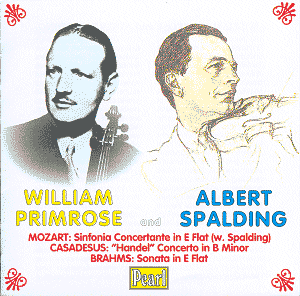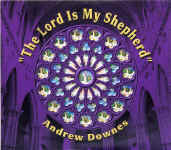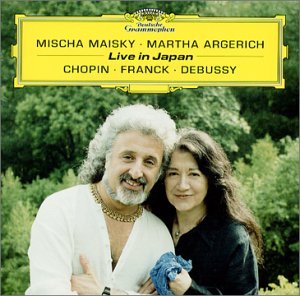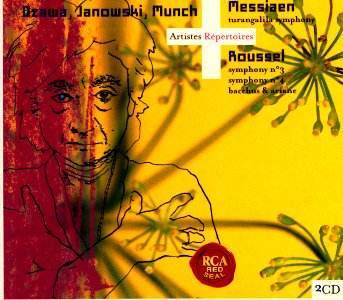 Composer: William Primrose, Henri Casadesus (attrib. Handel), Wolfgang Amadeus Mozart, Johannes Brahms
Composer: William Primrose, Henri Casadesus (attrib. Handel), Wolfgang Amadeus Mozart, Johannes Brahms
Works: Concerto in B Minor (Casadesus), Sinfonia Concertante (Mozart), Sonata No. 2 in E Flat Major (Brahms)
Performers: William Primrose (viola), Albert Spalding (violin), Chamber Orchestra conducted by Walter Goehr (Casadesus), New Friends of Music Orchestra conducted by Fritz Stiedry (Mozart), Gerald Moore (piano)
Recording: GEMM CD 9045, recorded between 1937 and 1941
Label: Pearl
William Primrose’s contributions to the viola repertoire are underscored in this compilation, which juxtaposes three significant works spanning the classical and romantic idioms. The Casadesus Concerto, long misattributed to Handel, serves as a delightful preface, offering a charming façade of baroque styling while revealing its modern pastiche. The Mozart Sinfonia Concertante stands as a hallmark of classical string writing, showcasing the interplay between violin and viola, while Brahms’ Sonata No. 2 emerges as a romantic masterwork, rich in emotional depth and technical demands.
Primrose’s performance is notable for its youthful vigor. The Casadesus piece reveals his articulate phrasing and dexterous bowing, although it is marred by the recording’s compromised sound quality, a recurring theme throughout the disc. Walter Goehr’s direction allows the woodwinds to shine, particularly in the Andante, where their contributions add a layer of color to the texture. However, the recording quality falters with a persistent scratch, diminishing the overall experience. The finale, while energetic, lacks the marked intensity that one might expect, reminiscent of Primrose’s later style, though it retains its whimsical charm.
In the Sinfonia Concertante, recorded with Spalding under Stiedry’s baton, the ensemble navigates the intricate dialogue between viola and violin. Primrose’s tonal warmth contrasts with Spalding’s brilliance, but both players exhibit a restraint that occasionally undermines the emotional impact of the piece. The cadenza is executed with finesse, yet the performance does not reach the heights of expressivity found in Lionel Tertis’s legendary recording. There are moments of hesitation, such as Primrose’s split note at 3.02, which momentarily disrupts the flow, compounded by a particularly jarring side join at 8.42 that cripples the momentum. Despite these blemishes, Stiedry’s shaping of orchestral counterpoint is commendable, revealing the intricacies of Mozart’s writing.
The Brahms Sonata with Gerald Moore stands out as the most compelling of the three performances. The partnership here exudes a palpable understanding, with Moore’s sensitive accompaniment allowing Primrose to explore the nuances of the score. The Andante con moto is a highlight, showcasing Primrose’s exquisite tonal shading and lyrical phrasing, all executed at a tempo that emphasizes the work’s reflective nature. This recording surpasses Primrose’s later interpretation with Firkusny, which, while technically proficient, lacks the same depth of affection.
This collection encapsulates the pre-Heifetz era of Primrose, offering a glimpse into the evolution of his artistry. While the technical limitations of the recordings detract from the overall listening experience, the performances themselves are historically significant and reveal much about Primrose’s developing style. A faithful representation of his work, it serves as both a tribute to his legacy and an invitation to revisit the nuanced eloquence of the viola.



